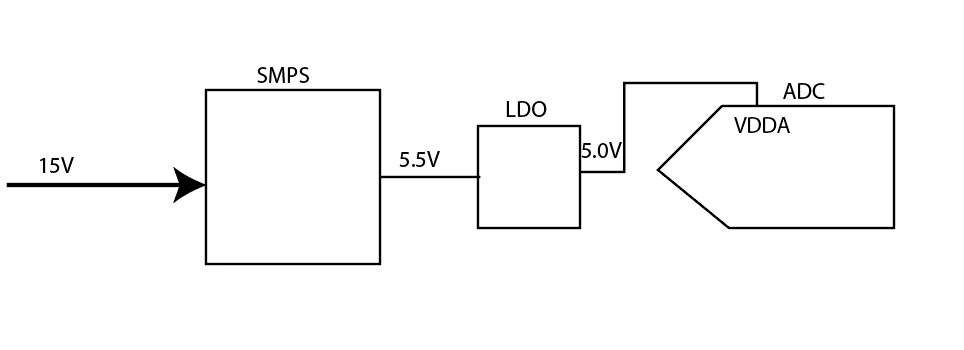I am designing an SMPS circuit and I am using a ready SMPS controller. In the datasheet, the ADP2303 Datasheet input range is given (3-20V) ± 1.5% output accuracy over temperature Output voltage down to 0.8 V, .What is the maximum voltage it can provide in this case?
In practice I use an ldo after smps because I will be feeding a sensitive adc. In this case, ldo will suppress ripple in the SMPS output with the psrr value. I will get 5.0 V from the LDO output ldo voltage dropout is lower than 0.2 V (for 1 amp). In this case, I want to feed the ldo input with a value such as 5.5 V. I will do this with SMPS output. Can the output of this SMPS be set to 5.5 V? What can be the maximum output voltage? I didn't see any specifications.
The output voltage circuit examples given are up to 5 Volts in datasheet . I thought I would ask the community before making mistakes SMPS controllers can generally provide a voltage slightly below the supply voltage. (Theoretically, the mosfet hold on time will increase)


